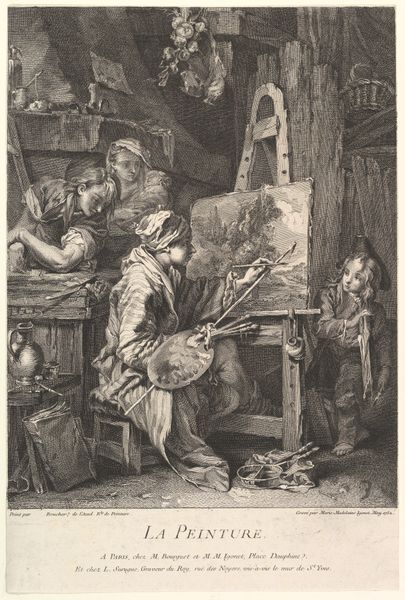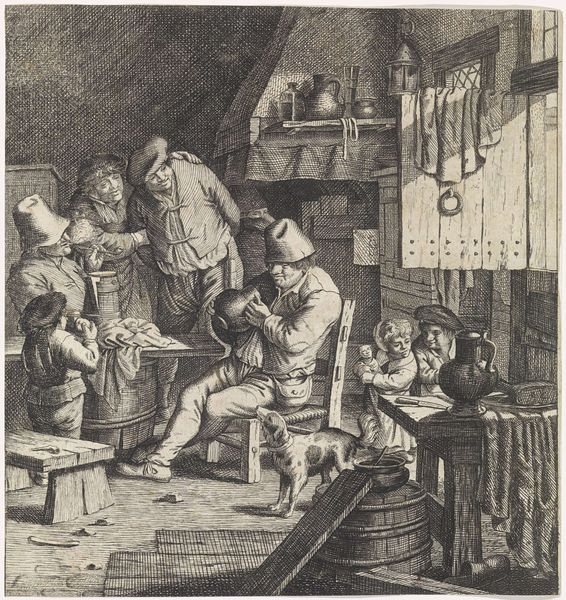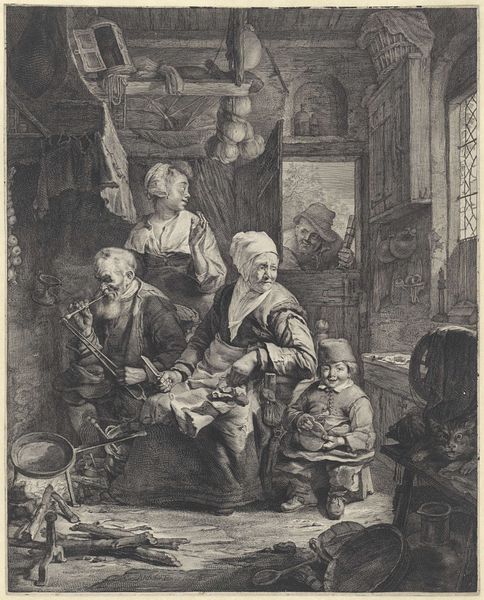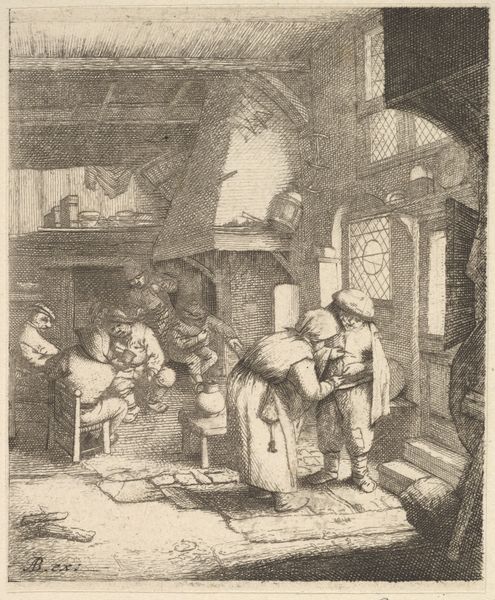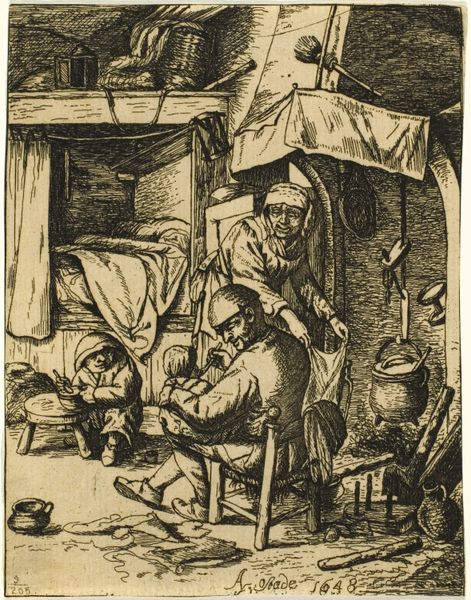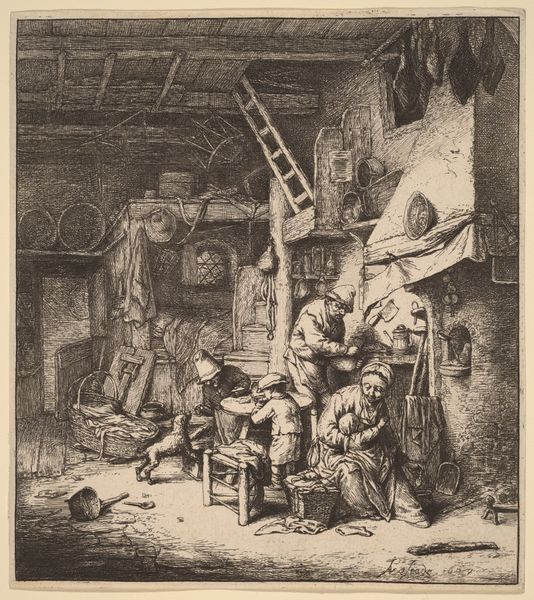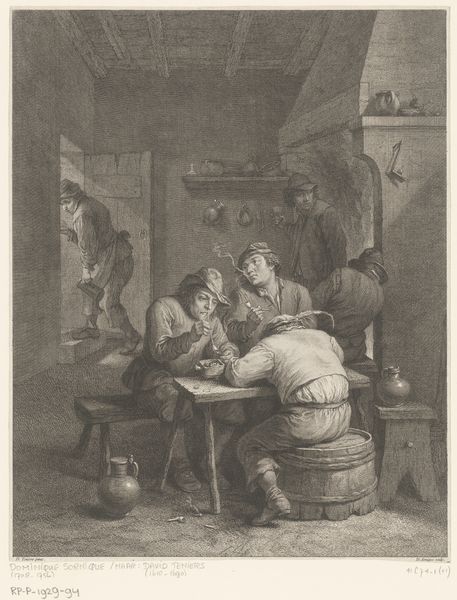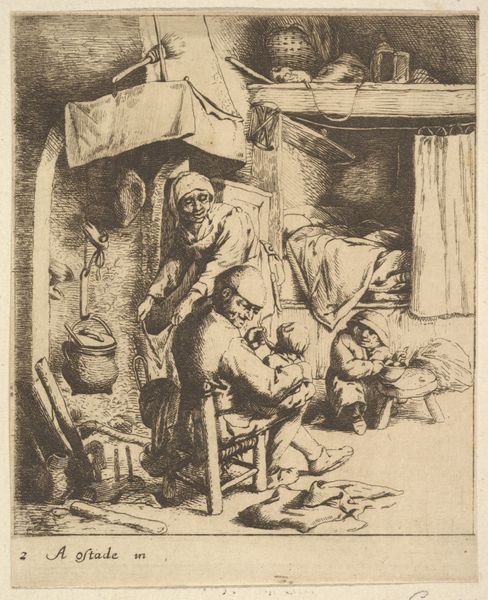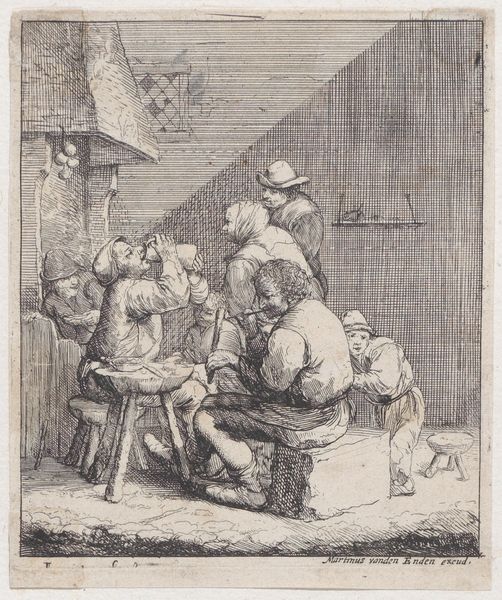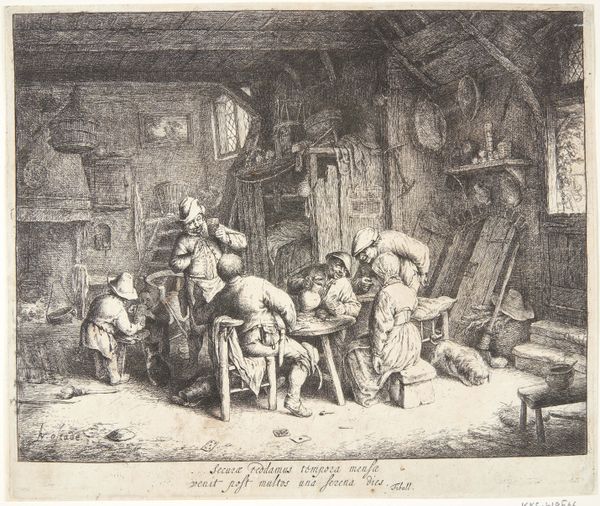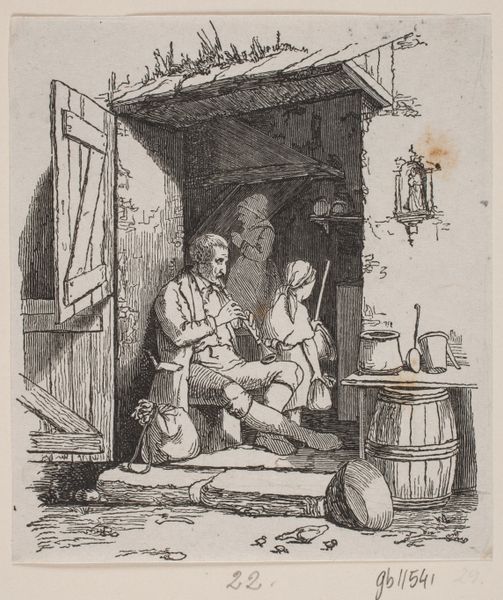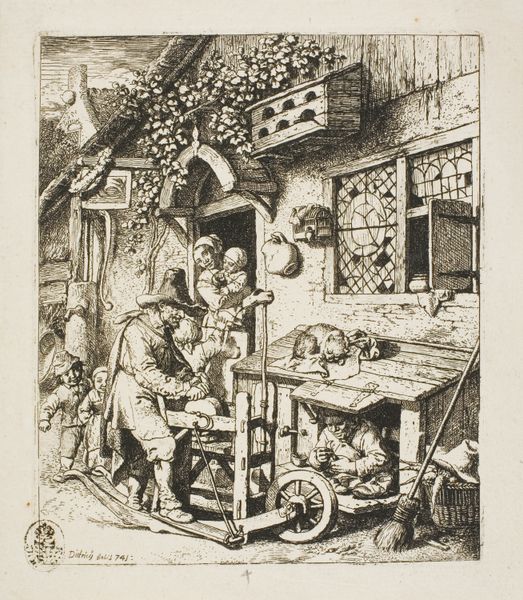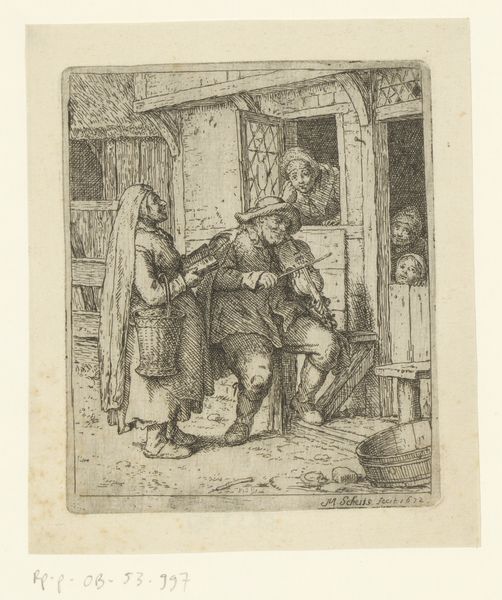
print, etching, engraving
#
narrative-art
#
baroque
#
dutch-golden-age
# print
#
etching
#
figuration
#
line
#
genre-painting
#
engraving
Dimensions: sheet (trimmed to plate mark): 25.2 x 18 cm (9 15/16 x 7 1/16 in.)
Copyright: National Gallery of Art: CC0 1.0
Cornelis Dusart made this print, "The Merry Shoemaker," in the Dutch Republic, sometime around 1700. At first glance, the image seems like a straightforward genre scene: craftsmen enjoying life and leisure, and perhaps even an affirmation of the dignity of labour. However, the scene may be charged with class anxiety. During this period, the Dutch Republic was dominated by a wealthy merchant class, who embraced Calvinism as a way to morally justify their wealth. It is possible that this scene of the "Merry Shoemaker" reinforces a stereotype of the working class as lazy or unvirtuous. Notice how the shoemaker is shoeing a man who appears to be drunk, while another man loiters on the ladder. This visual vocabulary would have been easily recognizable by the educated classes. Understanding the image requires that we consider the institutional history of printmaking, too. Prints were sold and collected. For the historian, understanding this image requires looking at the ways images circulate, and the social and class values they reinforce.
Comments
No comments
Be the first to comment and join the conversation on the ultimate creative platform.
